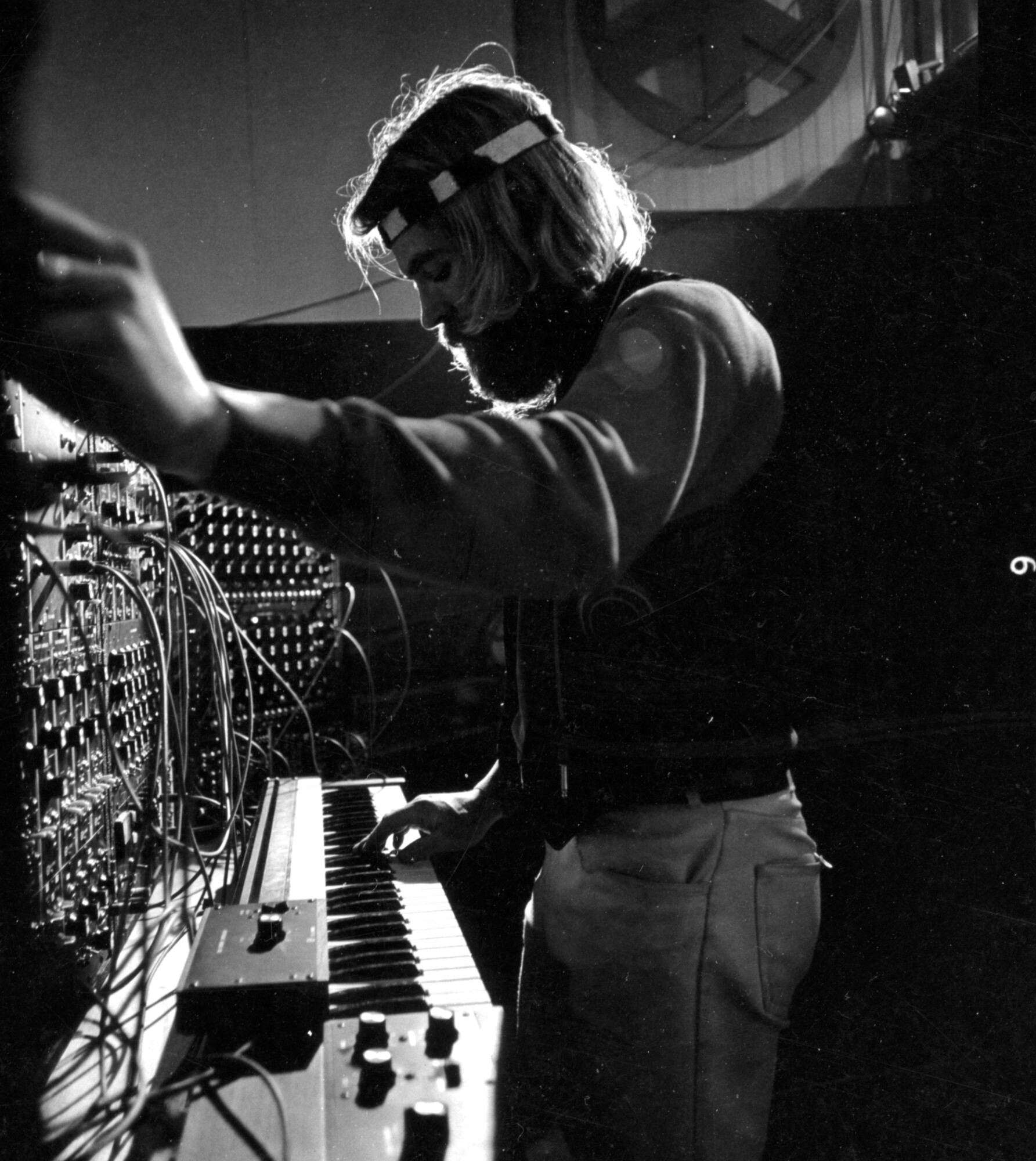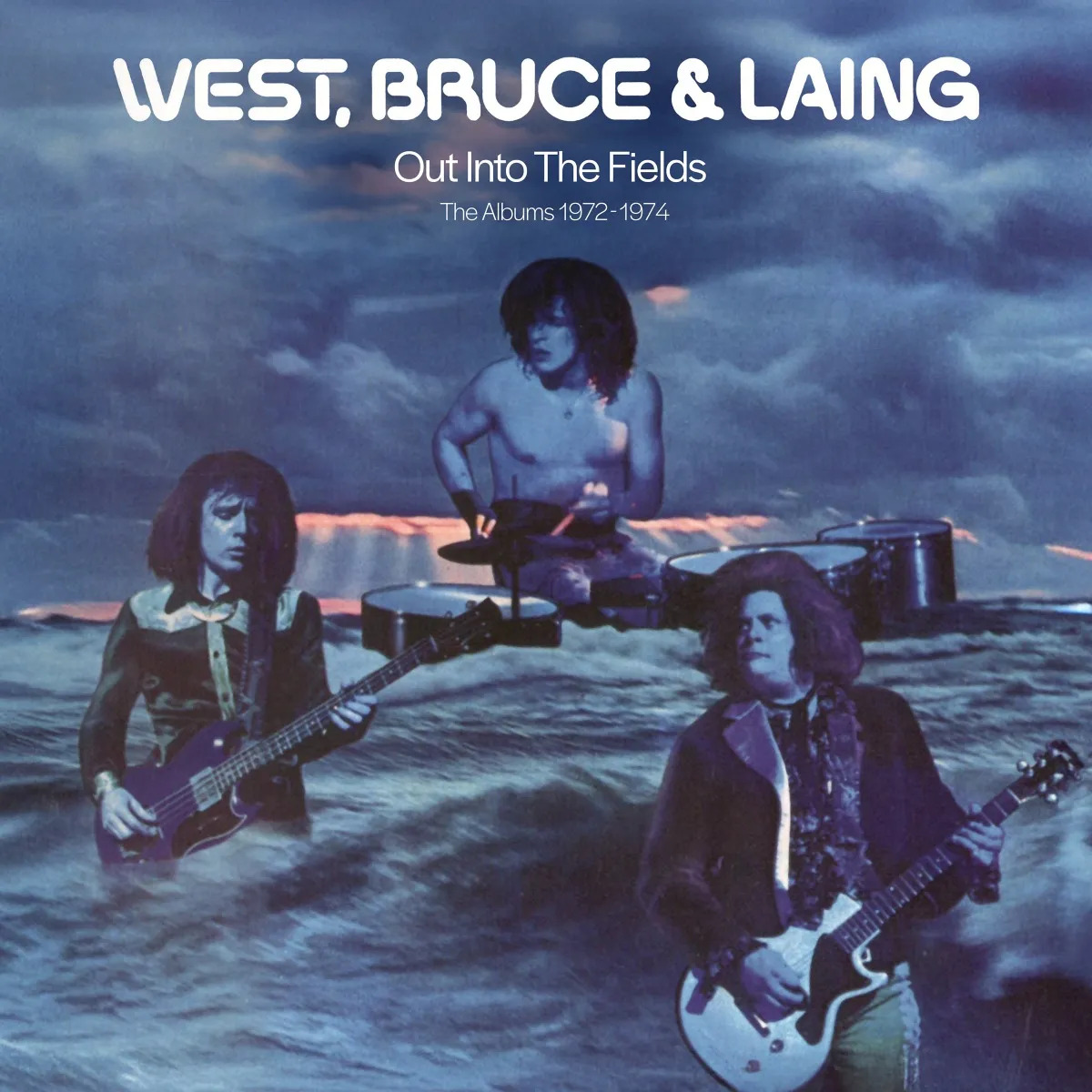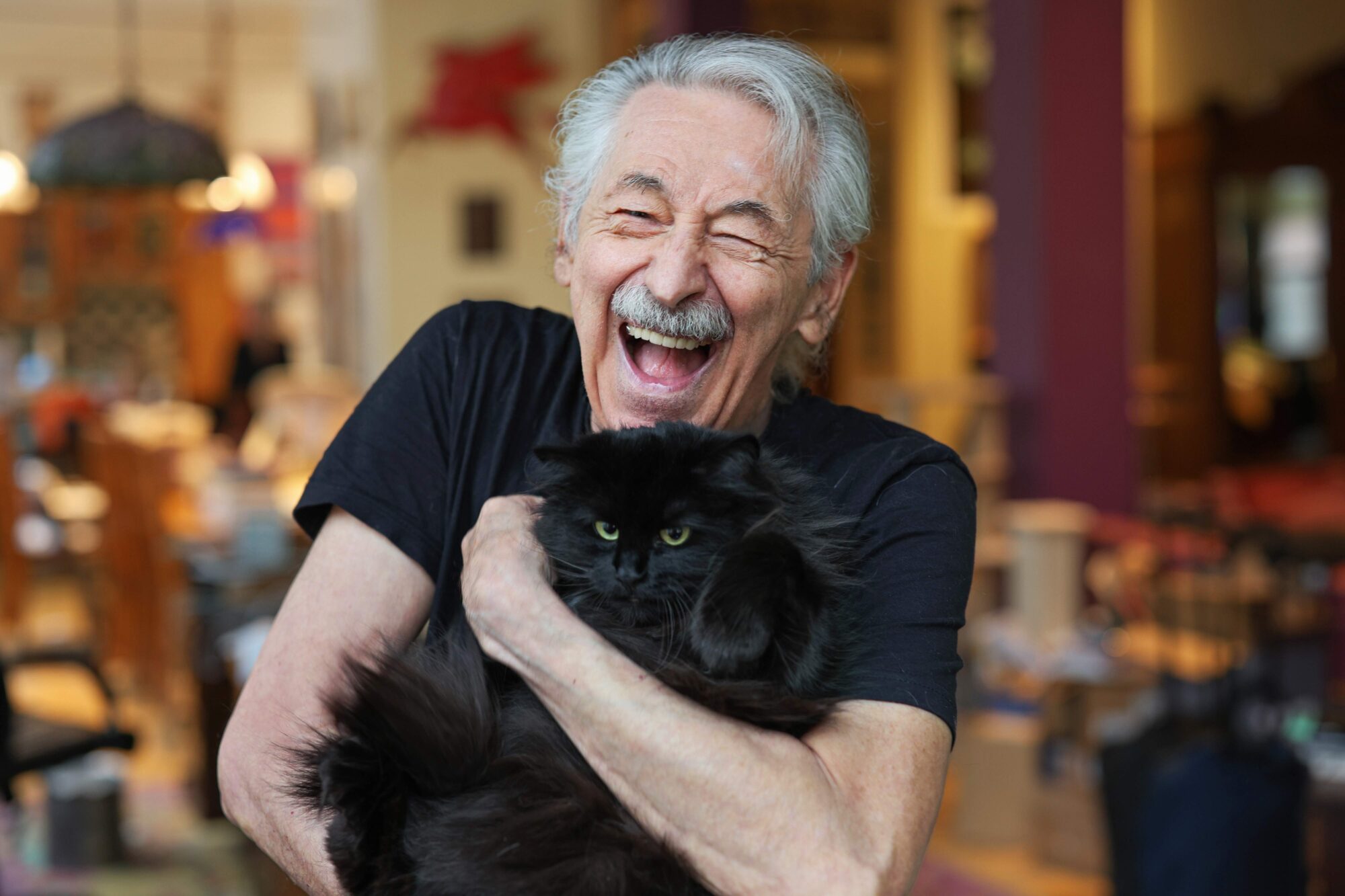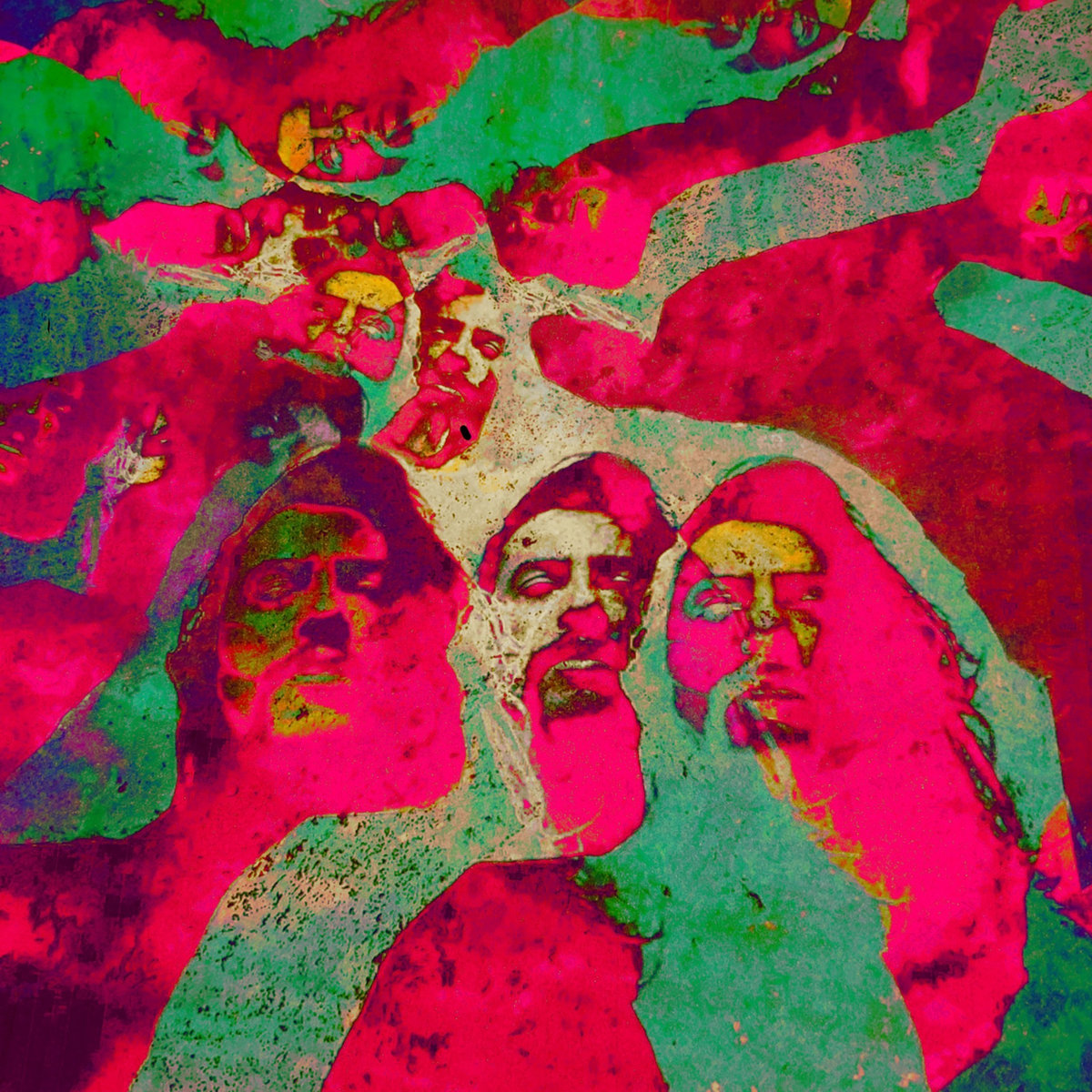Doug McKechnie | Interview | ‘San Francisco Moog’
‘San Francisco Moog’ documents for the first time a critical missing link in the history of electronic music. In 1968, a young singer named Doug McKechnie got hold of one the very first Moog Modular Series III synthesizers ever made—serial number 004—and began experimenting with it.
McKechnie was hauling many components around the Bay Area, performing improvised concerts for audiences whose minds had been opened by psychedelic rock, but whose ears were often unfamiliar with electronic sounds. Working outside of academia and traditional recording studios—the only places one could find Moog synthisizers at the time—he invented his own way to play the instrument and many of those recordings were recorded. After four years, McKechnie lost access to the expensive Moog. He moved on to other musical and creative endeavors. The recordings he made on quarter-inch reel-to-reel tape gathered dust in a closet for decades, and have never been released until now thanks to VG+ Records.
The music on San Francisco Moog captures McKechnie eschewing the somber rigor of the academic electronic music of the era for a more free-flowing, melodic sound that nonetheless explores the limits of the instrument’s plastic sonic possibilities. Using the keyboard and two 24-step sequencers that came with the deluxe Moog, he created music that wove together multiple electronic voices in the moment, an innovation typically ascribed to later pioneers like Tangerine Dream (who would end up the owners of the very same Moog).
‘San Francisco Moog’ not only proves a transportive listening experience, it casts a new light on the accepted history of electronic music.

“All things manifest in waveforms”
It’s fantastic to have you. How are you doing these days?
Doug McKechnie: Thank you for asking. I’m doing remarkably well, considering all the years that have gone by. I am ambulatory and have most of my marbles.
Would you like to tell us about your upbringing? What was it like for you and when did you first get involved with music?
I remember being handed a violin at the age of four… They didn’t let me keep it for a long time as there is nothing worse than a four year old with a violin. But I did learn to whistle at an early age and I also began to imitate sounds with my voice. In grammar school they called me a little Gerald McBoing-Boing, as I could almost instantly imitate different sounds like squeaking doors and bird calls later in junior high and high school. I sang it with the choir, which was really the underpinnings of my voice development. I was outgoing and theatrically inclined, and was in all the plays and singing in the musicals. At the age of 15 I talked my father into trading an old two wheel trailer of his for a piano, which sat in our rumpus room, where I began to explore. When I went off to college I auditioned for a musical review playing in San Francisco, a satirical review, six people, singing and dancing, and I spent almost a year performing with “The Macaroni Show” at the old spaghetti factory in North Beach. Doing four shows a week and going to school was too much and I quit both and went to work as an EMT with a private ambulance company called federal ambulance company.
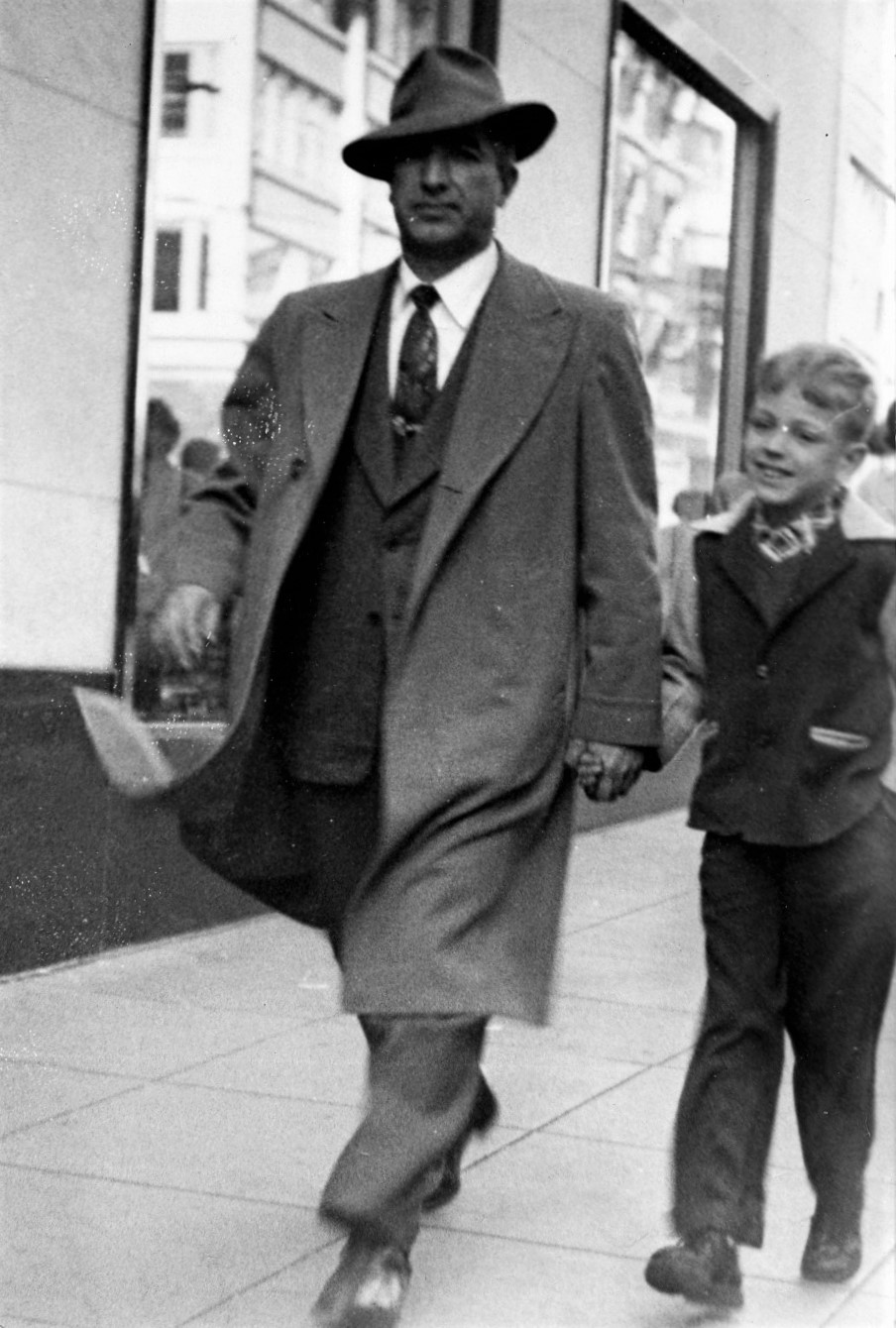
Do you remember some of the early singles or even records that got you interested?
The earliest record I am aware of listening to was Peter and the Wolf with narration by Basil Rathbone. Then there was the soundtrack to the movie An American in Paris, Gershwin filled my heart with joy. Reader’s Digest, put out a compendium of the history of music in a collection of LPs and I devoured that. I remember being overwhelmed by Beethoven and completely gob smacked by Wagner, but it was my sister’s interest in West Coast jazz, including, Howard Rumsey’s Lighthouse All-Stars, Dave Brubeck and The Four Freshmen…
What was the local scene like for you?
I was raised in Richmond California, which was just north of Oakland, California. During the war, the Bay Area had an influx of black families coming to work in the shipyards and industries created around World War II. As a young teenager, my friend, and I would go down to the “20/3rd St., apostolic overcoming holy church of God” and listen to the music, … little white boys, sneaking in the back of the church. There was also the “Joshua walked around the walls of Jericho, seven times Baptist Church” where we would listen to the fabulous gospel music. Some Sundays we would go down to 14th and Broadway in Oakland, and listen to Sister Mary, who stood on the street corner and sang her gospel into the edges of the tall buildings downtown. Her voice was like sugar and sunlight. So strong and clear, the hairs on the back of your neck will stand up. She was amazing in high school. I had a choir director, Philip Eaton, whose teaching was fundamental to the development of my voice.
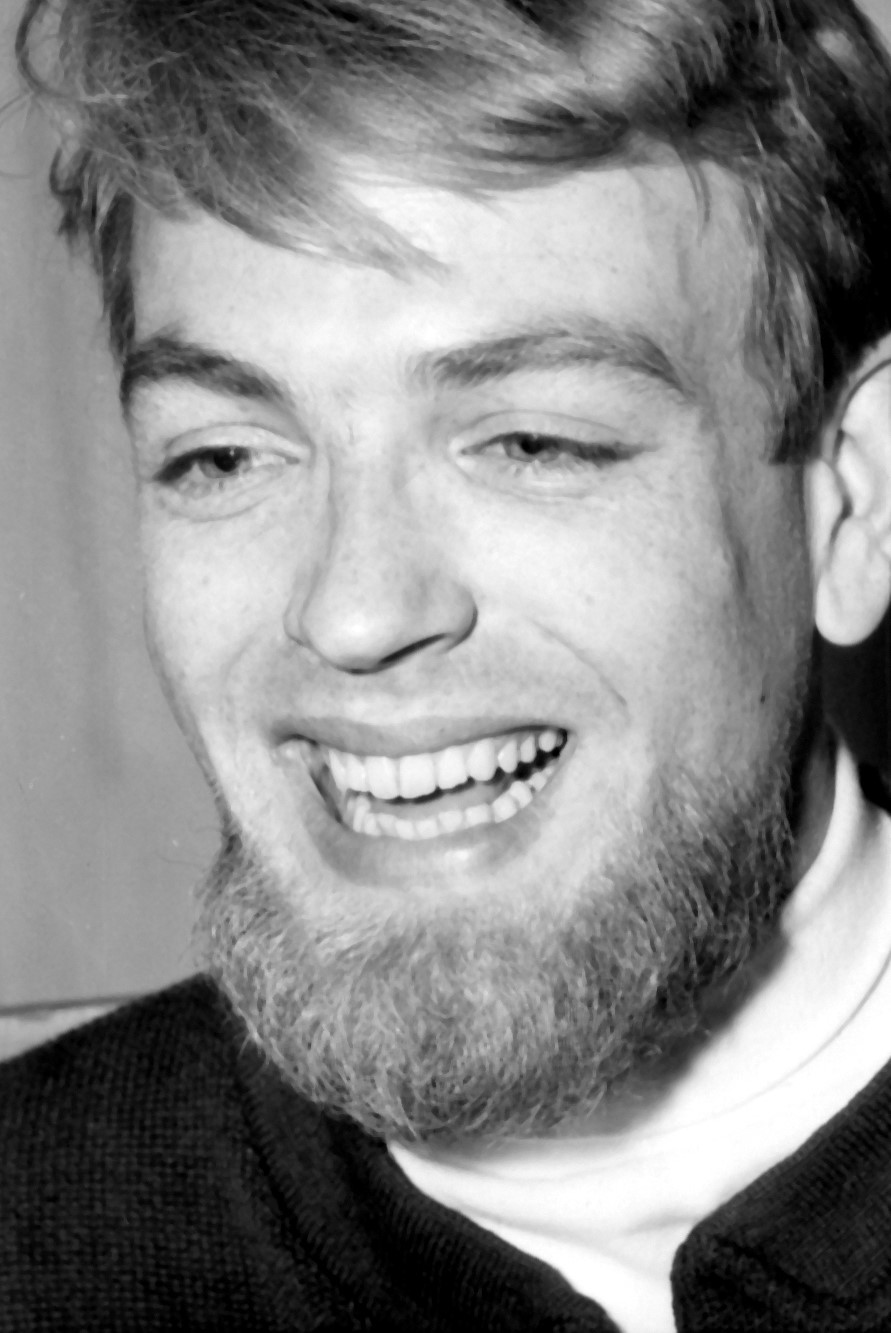
When did you first get interested in synthesizer?
When it landed in my lap, it was a summer day. Prior to the arrival of the Moog synthesizer to the third floor of 759 Harrison St. I had no inkling of anything electronic in terms of music. I had seen a very special Planetarium show called The Vortex at the Morrison Planetarium in San Francisco in 1958. Part of the music track for that show was what is called “Music Concrète.” I was not much of a fan of the bleeps and blurbs but I loved the lightshow. Little did I know that a decade and a half later I would be responsible for reviving that show, but that’s another story. Getting back to synthesizers, once Bruce Hatch, who owned the instrument had taken it all out of the boxes and set it all up. I asked him what is this? What does it do and why do you have it? He explained to me how it worked as he was a very competent engineer. But he was not particularly musical, although he enjoyed good music. Once Bruce explained the functions of the instrument to me, it was like being strapped in on top of a rocket ship… Off we went within six weeks. I was lecturing in schools and colleges on the dynamics of waveforms. My opening line for the lectures was “all things manifest in waveforms.”
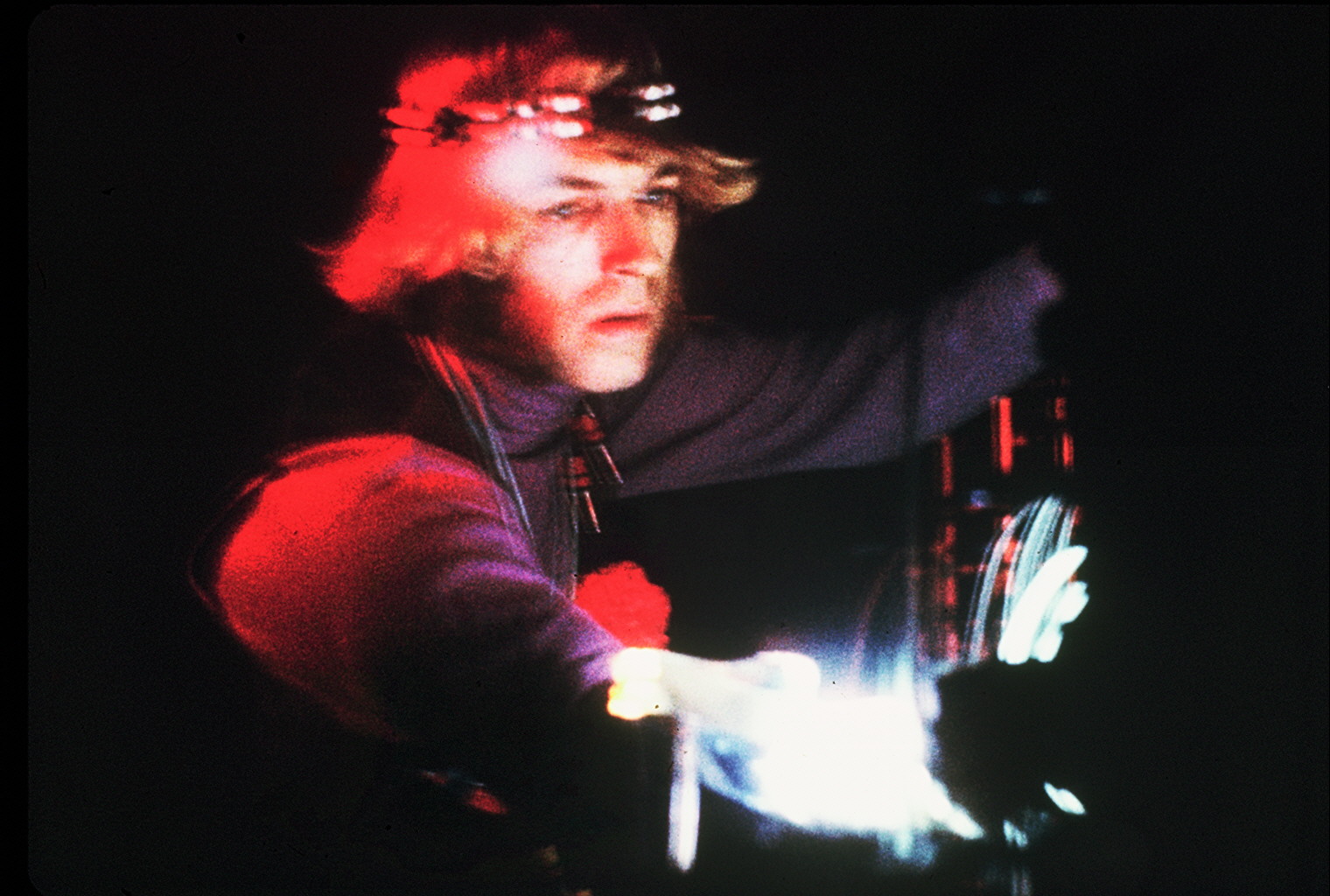
You were a very young man in 1968 and you got a hold of the very first Moog Modular Series III synthesizers ever made—serial number 004. How did that happen?
I had rented an entire floor of a building at 759 Harrison St. in San Francisco, the third floor, and I believe the rent was $200, an imposing sum in 1968 so I’ve decided to try and find a roommate to share the financial burden and Bruce Hatch showed up, a Midwestern boy, who had just flown in from Kansas, just like Dorothy in the Wizard of Oz. On the plane to San Francisco, Bruce had seen an ad in the mechanics illustrated magazine for a Moog synthesizer. When he got to San Francisco, he called his father and said, “Dad, I want that!” And three weeks later, these huge boxes showed up on our doorstep. That was the beginning of a four year adventure of exploration and inspiration.
Tell us about this synthesizer and its specs and magic?
Nine isolators, three envelope generators, one higher low, pass filter, one keyboard, one ribbon controller, two 24 note sequencers, a fixed filter bank and finally we had to purchase a keyboard controller and a box with 64 knobs to tune each note on the keyboard. The Moog’s oscillators were so sensitive that if the temperature in the room changed more than 4°, the pitches would change. So every time I played, I had to tune the keyboard by ear.
Did you buy other components too and experiment with it?
We play through two McIntosh amplifiers into two A-7 Altec Lansing Voice Of Theater, huge grey boxes, topped by great horn speakers. There were no external plug-ins of any kind. The Moog itself was quite enough.
Did you attend university?
I spent eight years going to college, first in theater, then in film (made a film on the American Nazi party in 1965, which won the Flarity film seminars as the “Best Documentary” in 1967) and finally Communications. My last semester in college was in the fall of 1966 where the head of the communication arts department came into class on our first day and informed us that we would not only learn everything there was to know about communication, but at the end of the class we would all take LSD which we did. Entire college class dedicated to preparing us to take LSD. It was one of the most profound classes I ever took in college and I have Dr. Richard Marsh to thank for that. That experience prepared me for what was to come.
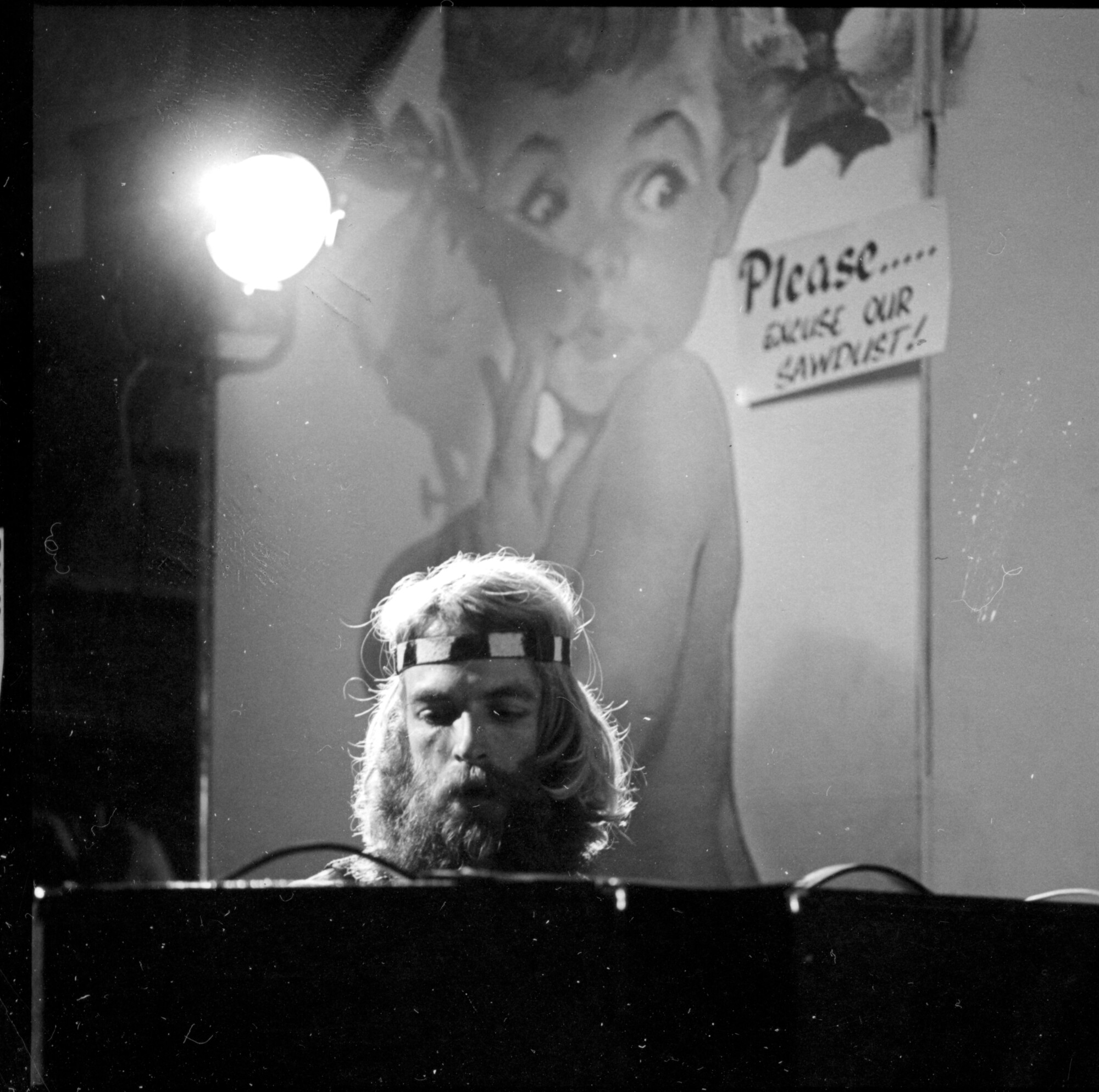
I guess the new sounds must have been very exciting. Were you familiar with projects like Fifty Foot Hose or The Silver Apples?
Until the Moog showed up, I had no idea of anything electric.
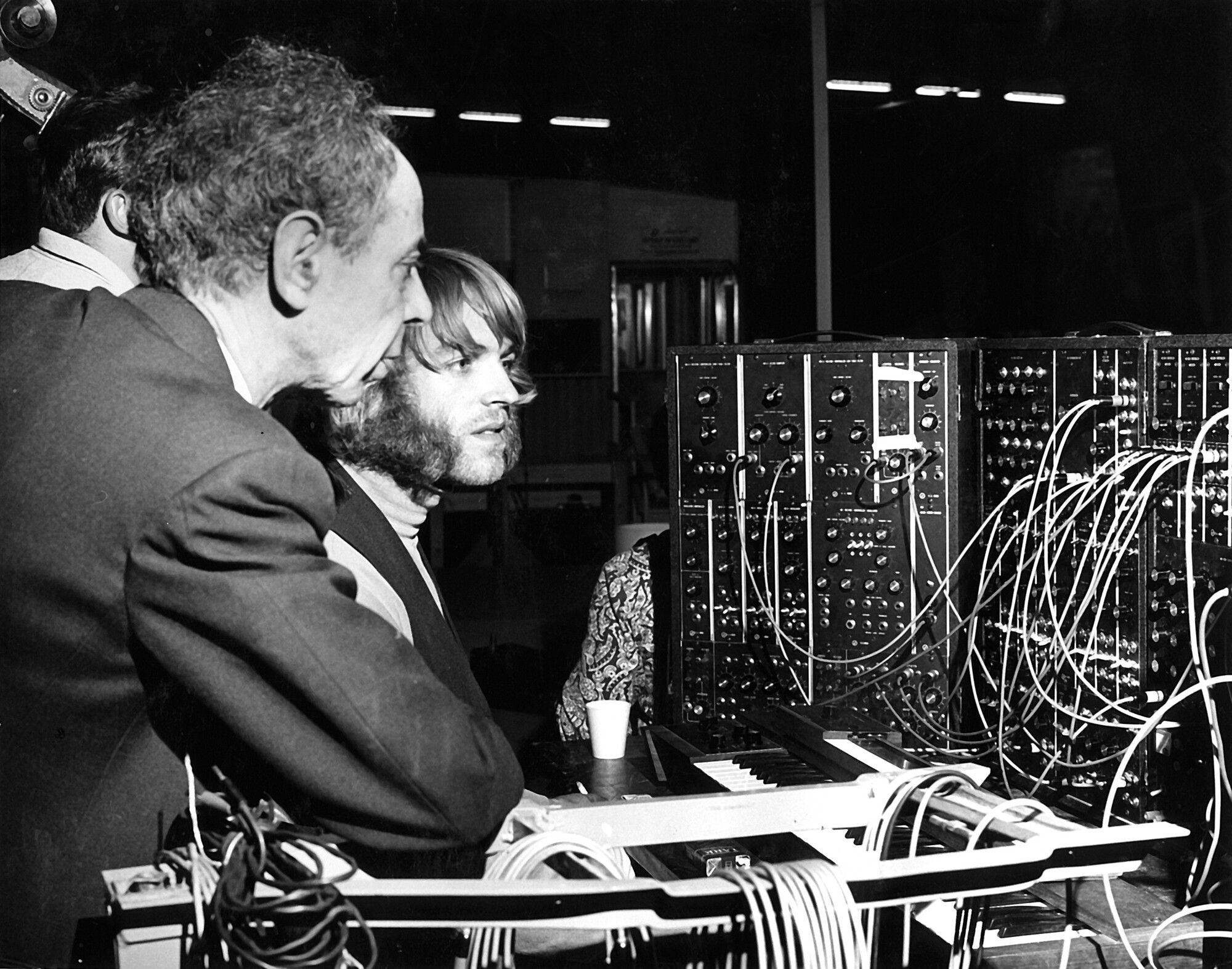
You had been performing improvised concerts … where was that and how did you organize those events?
Because the Moog was so new, events came to us. Bruce was interested in making a splash and a splash we did make. There were concerts at Glide church in San Francisco. There were recording sessions with The Grateful Dead at Pacific High recording studios, there were soundtracks for documentaries, Bruce’s instrument was also used to record the soundtrack of the infamous pornographic film The Green Door. We threw parties in our space at 759 Harrison St., lots of them. At the summer solstice of 1969. I was set to perform with The Family Dog on the great Highway. On the bill was Big Mama Thornton, a fabulous,jazz and blues singer, Sandy Bull, a fabulous oud player, a Marin county rock band called Mendelbaum, and the lightshow called Rainbow Jam… I would later perform with Rainbow Jam in Salt Lake City in a Planetarium in 1970 and again in 1971, extraordinary shows.
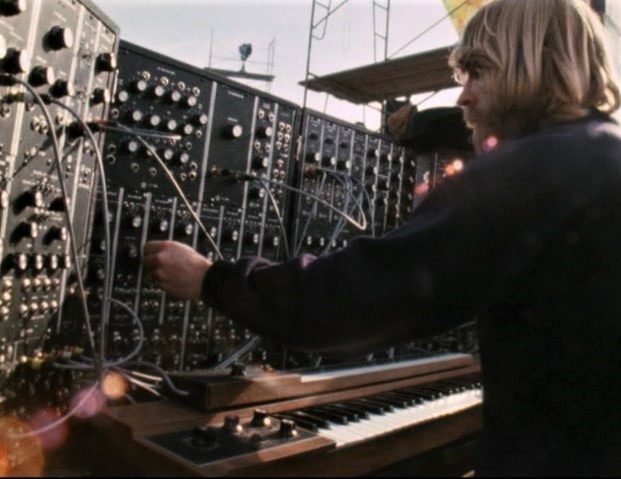
“It was a remarkable period of time to be alive”
Since you were active at the peak of psychedelic rock, were you influenced by it and by the use of psychedelics?
I think I answered this one in an earlier commentary. I certainly need you to be aware that most of us were continually high on something during that period of time. It was a remarkable period of time to be alive, and certainly a thrill to be privy to such a rare instrument of extraordinary potential.
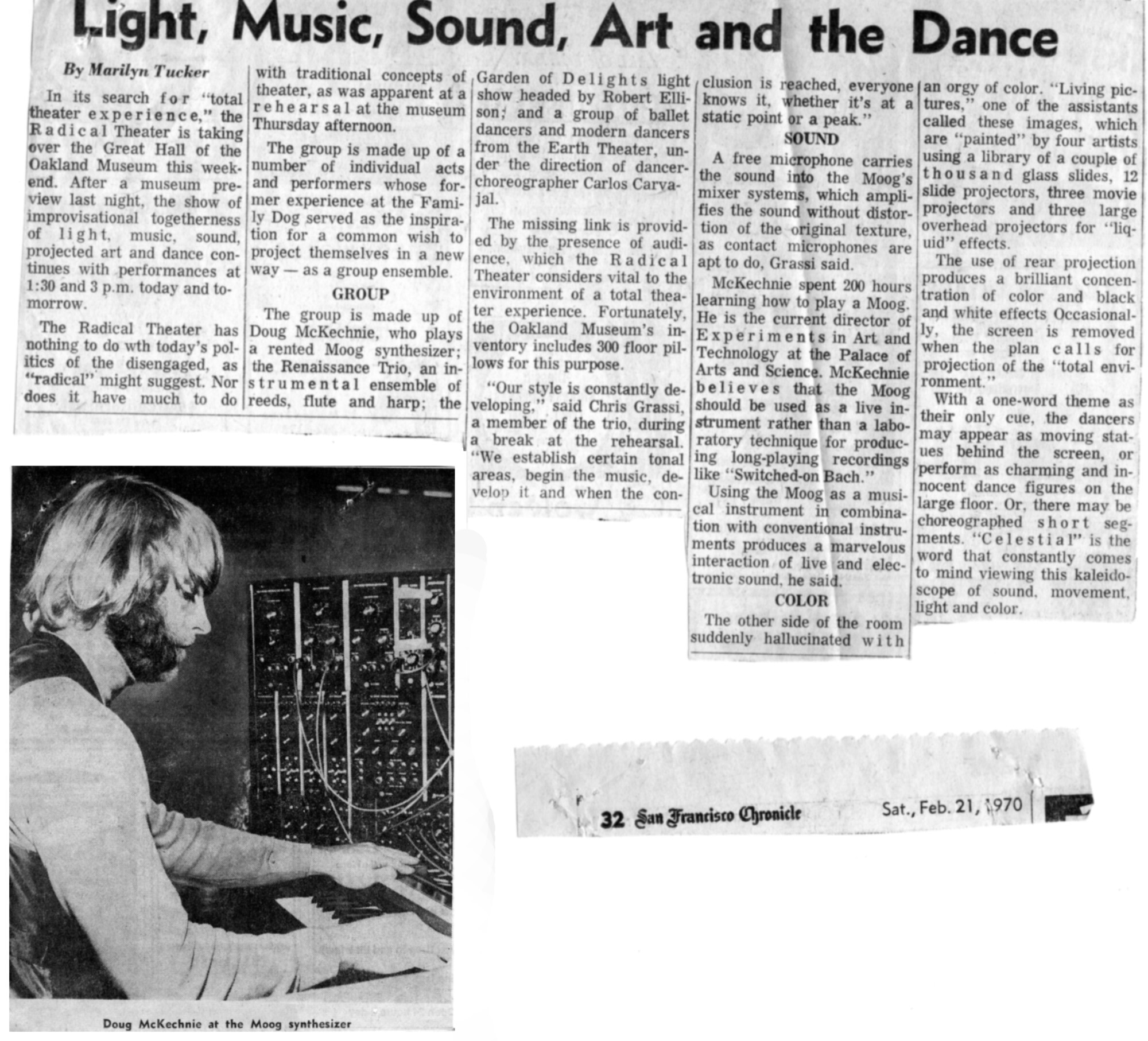
Tell us about the equipment you use to record your performances. How many of those gigs were recorded and who were some other bands that shared bills with you?
Most of the recordings were done on a Nagra, or sometimes a two track Ampex real-to-reel. All of the pieces of my archives were done in real time, no overdubbing, just dealing with what I had.
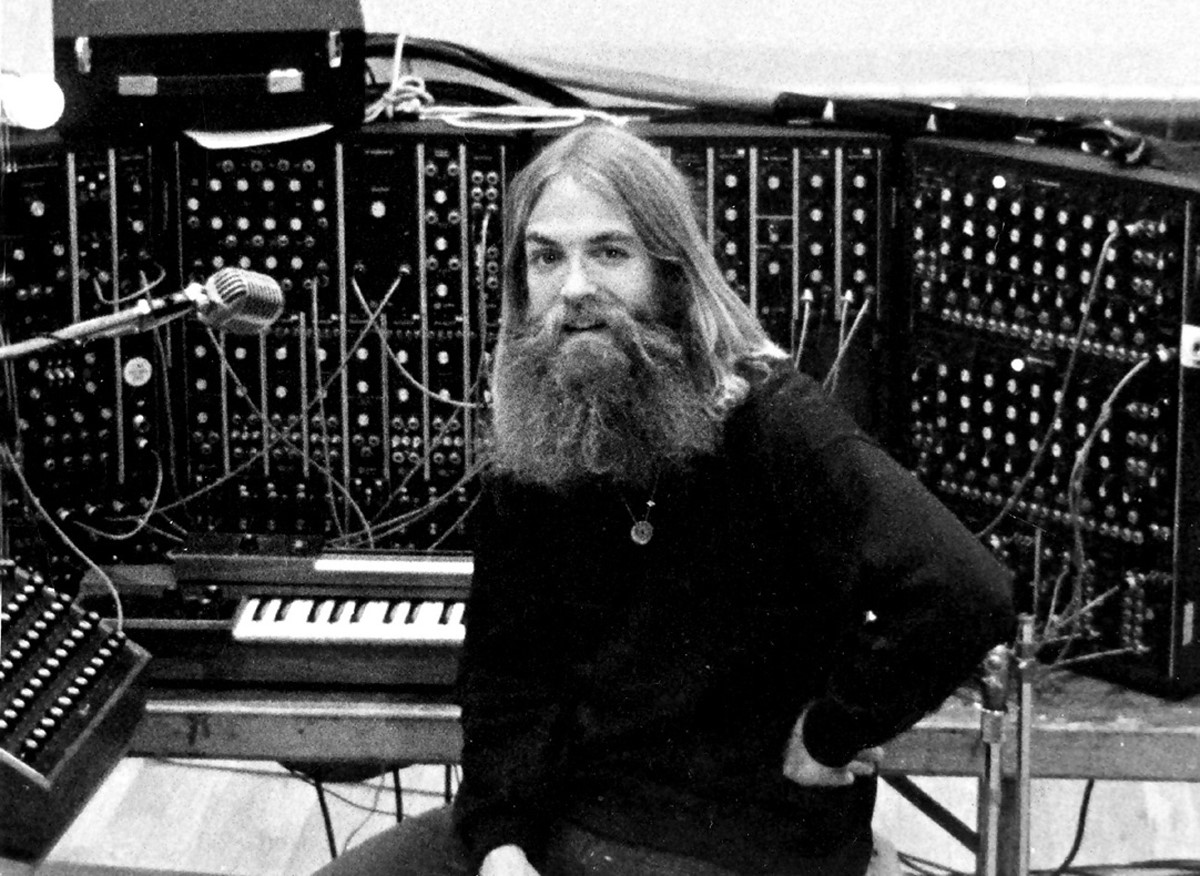
“I was one of the few people perhaps the first person to perform live with sequencers”
VG+ Records did an incredible job with the release of San Francisco Moog: 1968-72 LP. Would you like to share some background regarding the material released?
I was fortunate enough to have most of my performances recorded by Bruce Hatch, owner of the Moog. The music industry at this time was a basket of snakes. So I shelved my archives, not sharing them with anyone. After the Moog went away in 1972, I used the archives to create soundtracks for dance and film during the mid to late 70s. The documentary short subject “Spaceborne” used part of the archives in that soundtrack. It was nominated for an Academy award in 1977, a remarkable film. In fact, it was the world’s very first extra terrestrial film; not a single frame of the film was shot on the planet. But I digress. About 10 years ago my colleague, Paul de Benedictis, one of the four San Francisco synthesizer ensemble members asked me if he could put up some photographs of me playing the Moog along with some clips of music from the archive. I was happy to have him do this. In 2019 or maybe it was 2020 I was contacted by VG+ Records asking if there was any more of that music available. After talking with Lee Gardner, and determining he was an honest man whose interest was real, I sent him a copy of the archives. A week later I received an email back with three large letters WOW, and a comment that they believed that I was the missing link in the synthesizer history. I was confused and asked for an explanation, what do you mean missing link? They informed me that I was one of the few people perhaps the first person to perform live with sequencers. You have to understand the other three Moog synthesizer swears locked into studios, not portable, like our setup. I was a little stunned, but also thoroughly delighted with their suggestion that they would like to do two vinyl albums of my archives. How could I resist? I didn’t resist. And I am thrilled with the results.
So ‘Vol 2’ offers the remaining material?
Yes, volume two is the rest of the archive, and very similar to volume one in that it is done on the same instrument.
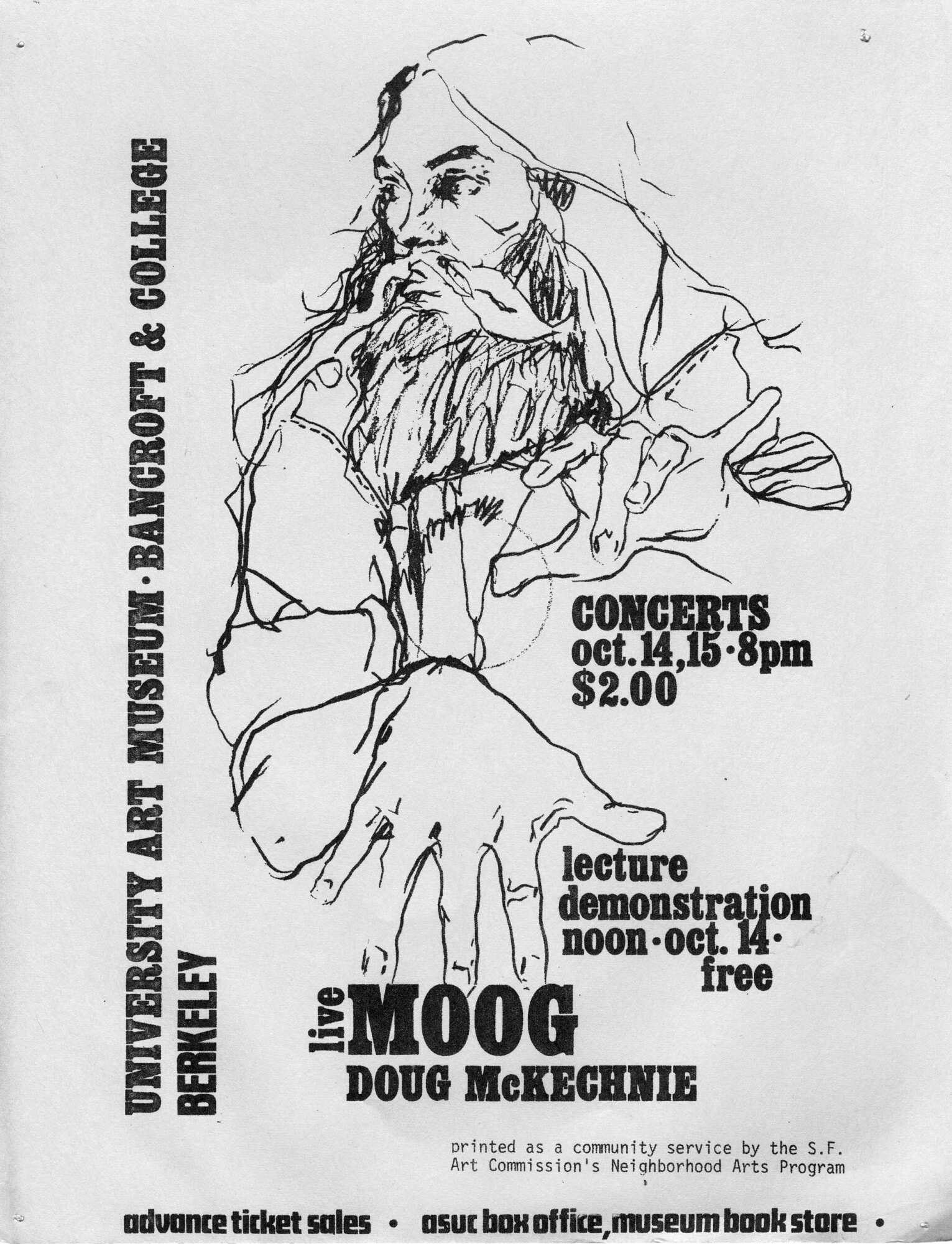
Did you ever come close to signing a record deal at the time?
In 1968 I created a group called Sunshine. I met with my Moog, Pete and Terry Grassi, on harp and woodwinds, and Dan Erkula on flute. We came extremely close to being chosen to create the music for the new television special “Peanuts” but Vince Guaraldi got the gig instead. That’s as close as that came to any record deal. Most musical producers didn’t know what to do with electronic music. Not only did it sound weird, there was no category for it. I remember when I became a member of the musicians union local six they said well what instrument do you play and I said I play a voltage controlled analog computer and they looked at me like I had just turned to salt.
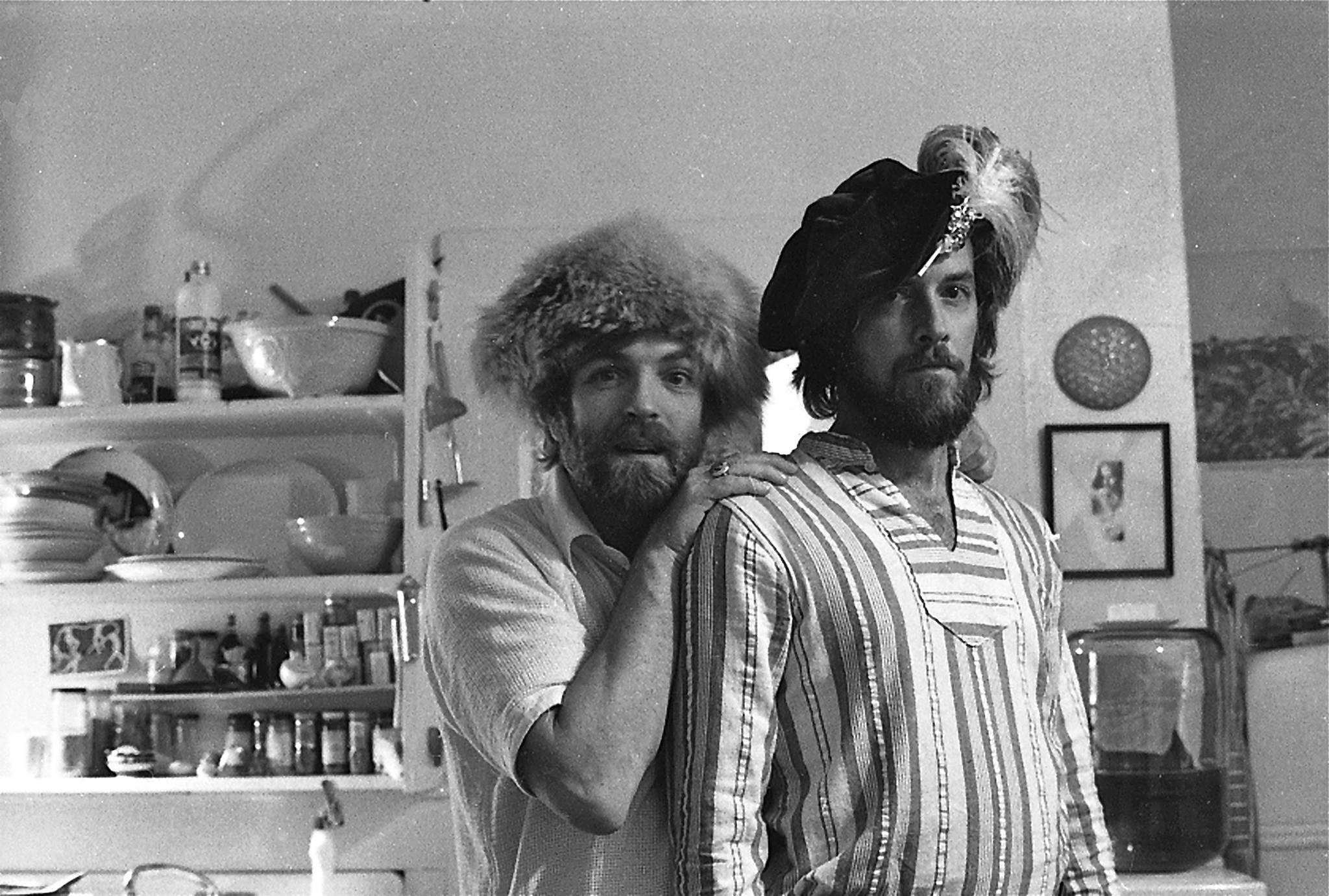
What can you tell us about your collaborating project with Paul J. de Benedictis?
Paul J. de Benedictis came to me as a young student, wanting to learn synthesizer. We worked out a deal where both of us bought Rhodes Chromas and my student soon became my colleague. I was also working in partnership with John Lewis and a very talented musician, where I created a company called Soungtracks. Paul J. de Benedictis came to me one day and said there’s this start up company called Opcode and I’m thinking about applying for a job there. I encouraged him enthusiastically.
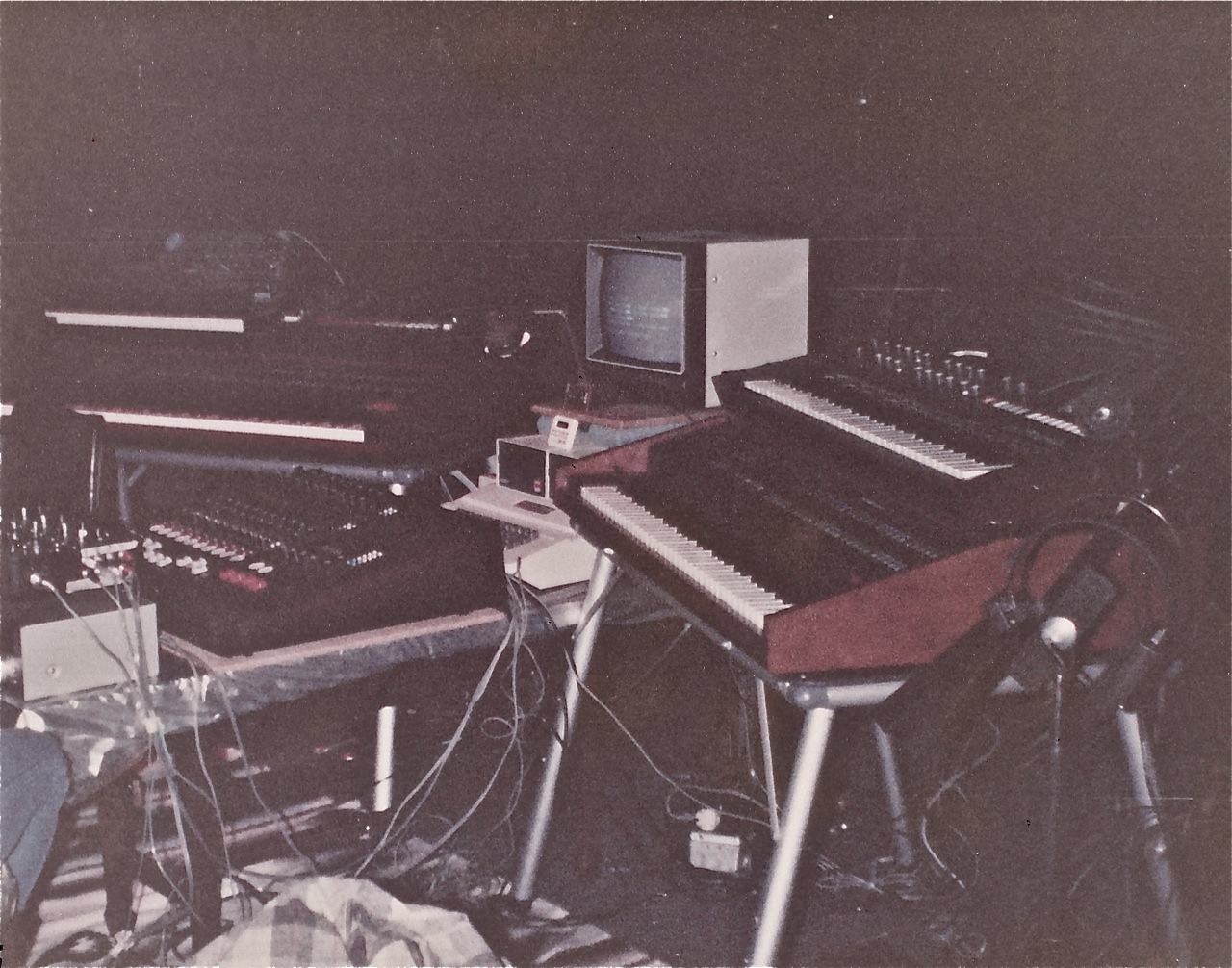
Several years later we created the San Francisco synthesizer ensemble with Paul and John Lewis and Jim Purcell, and myself Paul and I also gagged as a duo called New Logic. There is an entire archive of 80s music, my solo work, the work with Paul and a cassette called ‘Inside Your Head’. Then there is the music of the synthesizer on the sawmill itself, the Golden Gate Bridge anniversary suite, and the tunes from our extraordinarily fantastic show that we performed at theater Arto in San Francisco. All of these pieces are still in the archives yet to be disseminated.
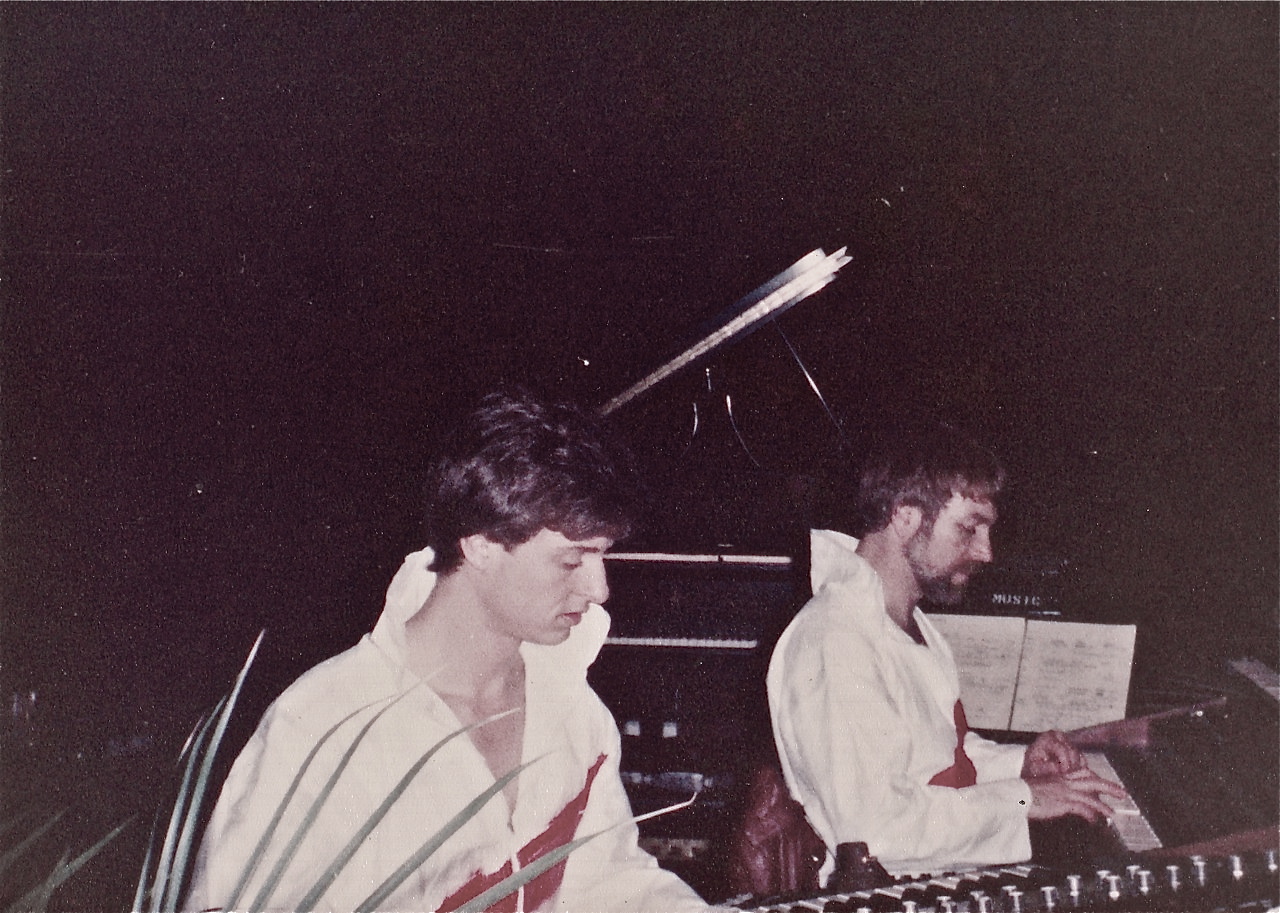
So what’s the story behind ‘Inside Your Head’?
We both lived in the neighborhood of Potrero Hill in San Francisco, and we had become friends with one of the building tenants, a fabulous photographer, named Wernher Krutein, who created a thing called PhotoVault, thousands of photographs of people and places and things. Paul and I decided to create some music in Werner’s studio. ‘Inside Your Head’ was the product of that collaboration. We created dueling Rhodes Chromas, flying by the seat of our pants, most of the time while recording and watching extraordinary images on the walls created by Wernher Krutein. There was actually a show recorded of his photography to our music that was performed in several places. I’m afraid it doesn’t exist any longer. However, the music does exist. A few years ago we contacted Wernher Krutein and asked him to put the visuals to one of the inside your head pieces called ‘Embryo’. You can find that on YouTube.
What about the San Francisco Synthesizer Ensemble? How did that come about?
Some things were just too obvious. There were four composers. Each were their own studios filled with synthesizers. I had the ambitious idea of putting us all together in a large theatrical space with exciting visuals from computer generated sources, including film, material from Jordan Belson and Richard Taylor, and other computer-generated art. We were way ahead of our time and very underfunded in the PR department so we had a fabulous show which ran for a number of weeks to which very few people came. Somewhere in the archives of now deceased people is the record of that performance. We are lucky enough to have one video shot by Eric Harnew of our performance in theater Arto.
How do you approach music making? Do you have a certain way or is it just a spontaneous affair?
Usually it is spontaneous.
Is your approach to laying down music a building block process?
Yes.
Do you find yourself to be a perfectionist, in control, or do your ideas lead you, taking on a life of their own?
I try not to get in the way of my muse. Music always takes on a life of its own.
What did you do in the 80s, and the following decades?
In the 80s I was doing it all acting, singing, not dancing anymore, that was the 70s… I started a recording studio and began making soundtracks for film and television with John Lewis and Joshua, Brody and Jim Purcell and Paul J. de Benedictis… I also became a producer of events. I did the first four years of the festival at the lake, in Oakland California. I was a founding member of the dance company dance spectrum with Carlos Carvajal and I became a PR person, first promoting my own gigs and then in the late 80s I was given the gift of what I call a gig from God, where for the next 20 years I created stories about wonderful people volunteering for Laguna Honda Hospital volunteers. I got married in 1983 and became a homeowner in 1984 and we had our first and only child in 1991.
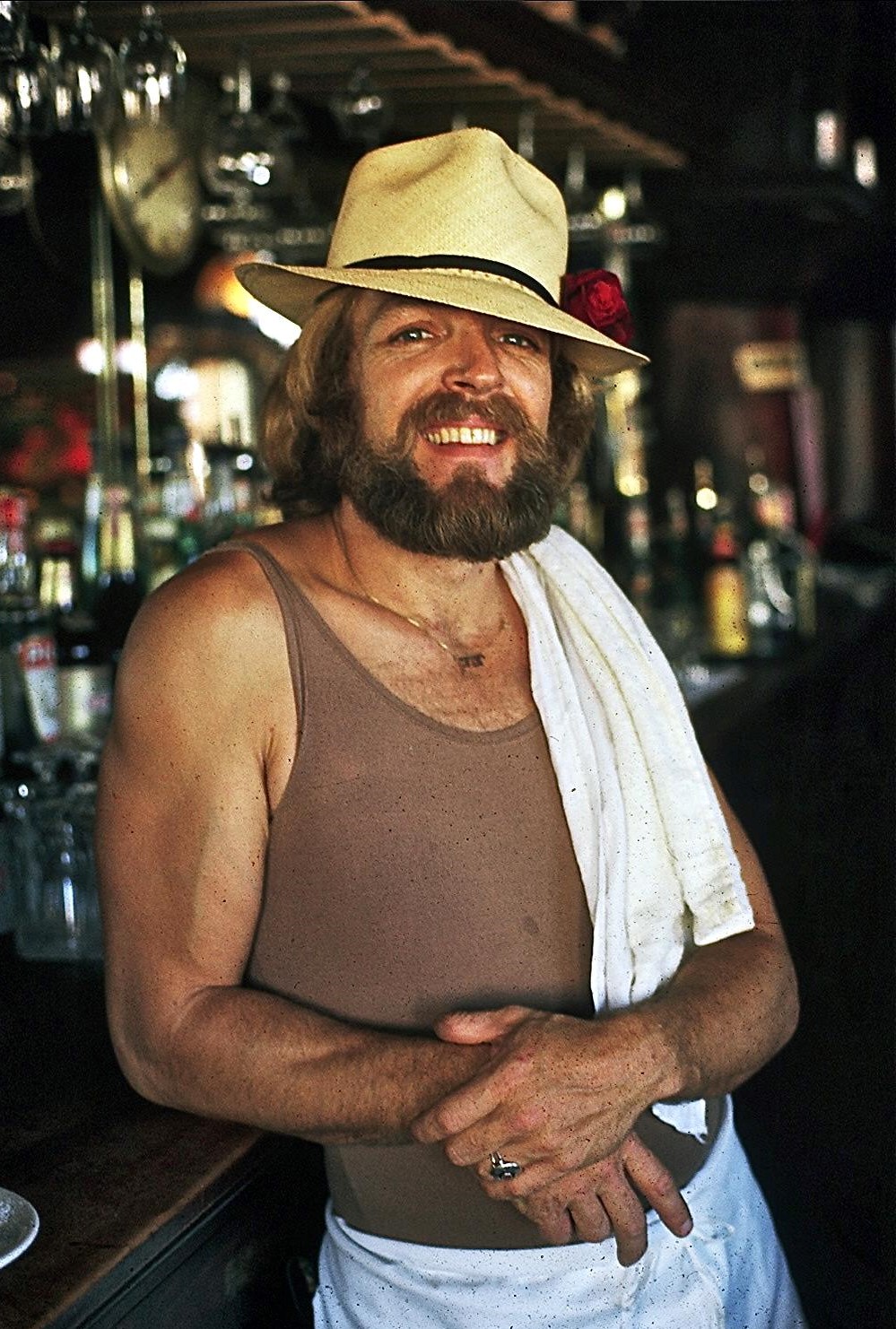
What else currently occupies your life?
At the moment I am enjoying playing piano occasionally with the Contra Costa Performing Art Society group of Piano Composers, I have a small studio in my living room and periodically I sing with the Craig MacGregor band in Berkeley. As station chief for the catalytic agency, I am occasionally obliged to create something wonderful. I am also a videographer for Joie Landeaux’s professional actors studio.
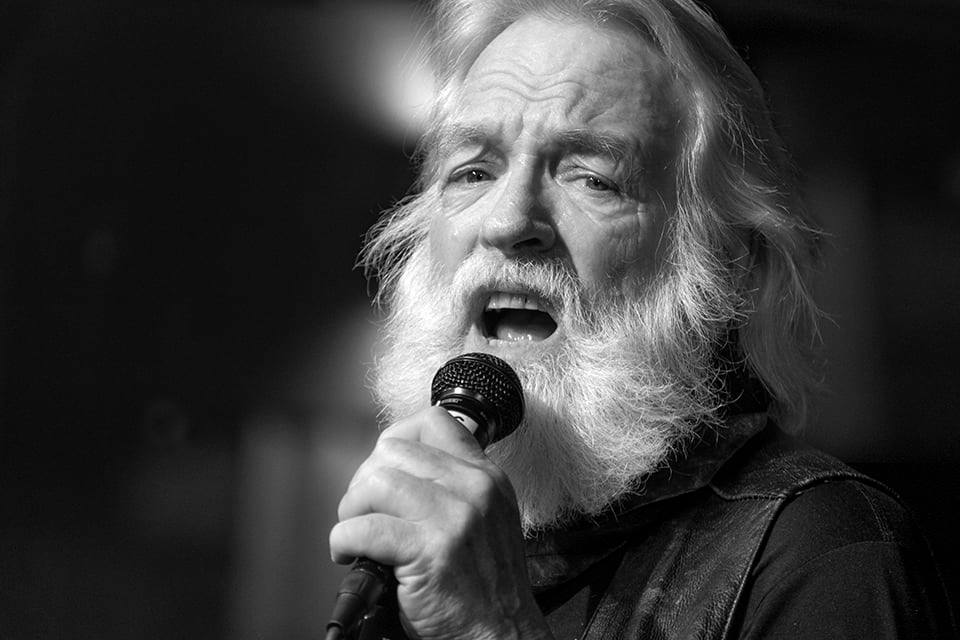
Thank you for taking your time. Last word is yours.
Thank you for this opportunity to tell my story. All things, manifest and waveforms. And what comes around goes around and round and round. Let us hope that most of us have learned to surf, for we must definitely keep ahead of the wave of this next extinction event.
Klemen Breznikar
Headline photo: Doug McKechnie with Moog synthesizer (1968)
Doug McKechnie Facebook
VG+ Records Facebook / Instagram / Twitter / Bandcamp

